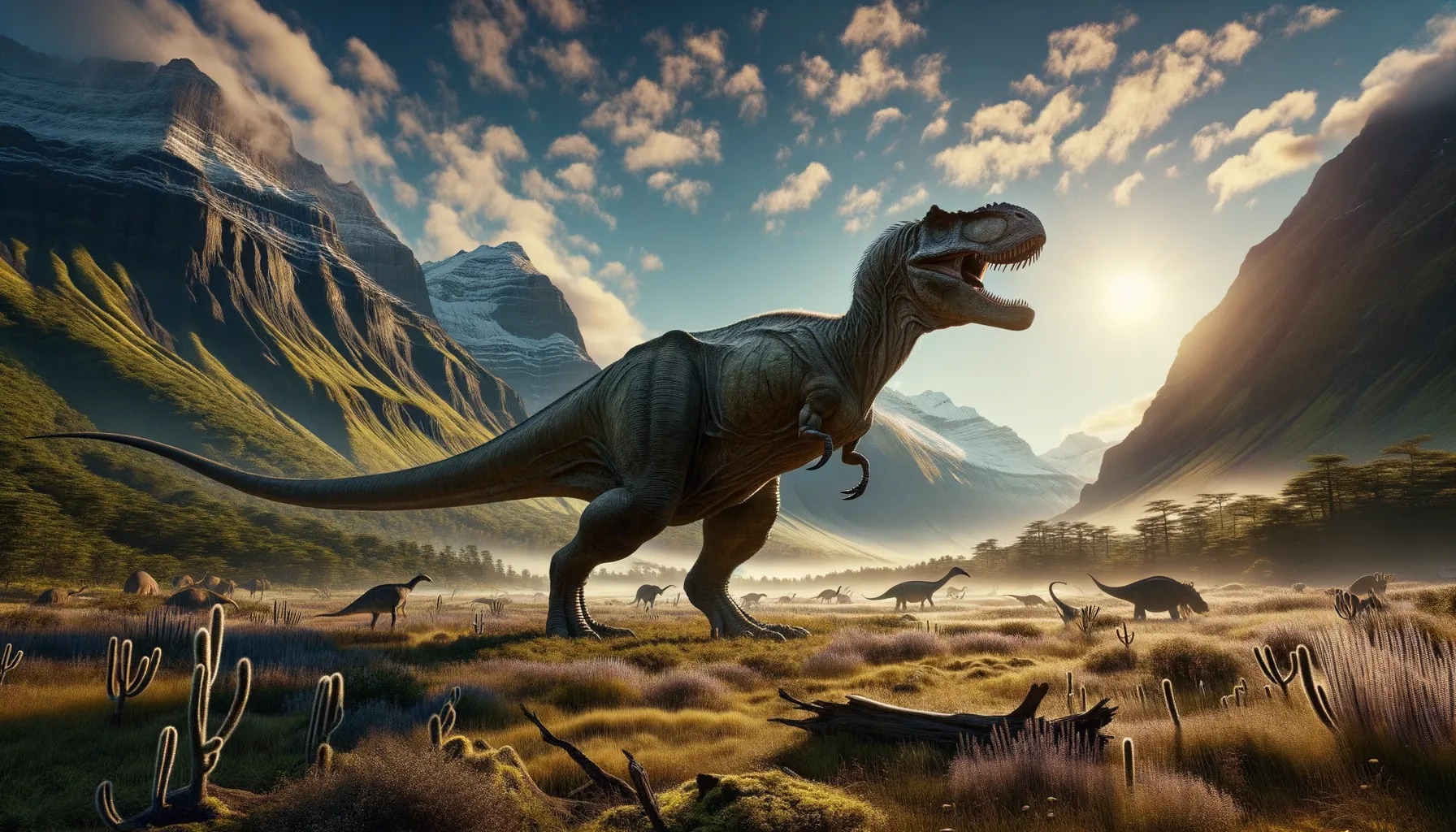
Willinakaqe
Discover the ancient herbivore wonder.
Period
Cretaceous
Length
Up to 11 meters long.
Height
Around 3 meters at the hip.
Weight
Approximately 1,500 kg.
Willinakaqe was a herbivorous dinosaur that roamed parts of South America during the Cretaceous period. Known for its large size and herbivorous diet, this dinosaur played a significant role in its ecosystem. Its physical features suggest it could move efficiently through its environment, foraging for plants and avoiding predators. The discovery of its fossils has provided valuable insights into the diverse dinosaur species that once inhabited our planet.
Diet
Willinakaqe primarily fed on a variety of plants. Its diet consisted of low-lying vegetation and, possibly, leaves from higher branches it could reach.
Hunting
As a herbivore, it did not engage in hunting. Instead, it foraged for food in its environment, using its keen sense of smell.
Environmental challenges
Living during the Cretaceous period, Willinakaqe faced challenges such as drastic climate fluctuations and evolving plant life. It needed to adapt to periods of scarcity and different vegetation. Predation by larger carnivorous dinosaurs was another significant challenge, and staying in groups may have been a strategy to protect against these threats.
Speed
Moderate movement on land.
Lifespan
Several decades.
First discovery
Discovered in Argentina, 1999.
Fun Facts
- Willinakaqe is a dinosaur that lived around 80 million years ago during the Late Cretaceous period.
- Its name means 'Southern Duck', which reflects its duck-billed appearance and the southern location where its fossils were found.
- Willinakaqe was an herbivore, meaning it primarily fed on plants.
- Fossils of Willinakaqe have been found in Argentina, making it one of the native dinosaurs from South America.
- This dinosaur is known for its long, flat snout, resembling the bill of a duck.
- Willinakaqe was part of the hadrosaur family, which are often termed 'duck-billed dinosaurs' for their distinct features.
Growth and Development
Willinakaqe likely experienced rapid growth in its early years to reach a size that could deter predators. Its development would have included toughening its hide and honing its foraging skills. Juveniles needed protection from both predators and environmental extremities.
Habitat
Willinakaqe lived in regions that once had lush vegetation, such as forests and riverbanks, in what is now Argentina. Its habitat provided ample resources for feeding and breeding. Seasonal changes would have influenced its movements and behaviors.
Interaction with other species
Willinakaqe coexisted with numerous other dinosaur species, including predators like theropods. Its size provided natural protection, but cooperation in herds aided its survival. Interactions with other herbivores might have involved competition for food resources.
Natural lifespan
Willinakaqe could have lived for several decades in the wild.
Reproduction
Willinakaqe likely reproduced by laying eggs in well-hidden nests. Parental care might have extended to guarding these nests, though evidence of specific behaviors is sparse. Hatchling survival rates depended on environmental conditions and predation pressure.
Social behaviour
This dinosaur probably lived in groups, which provided safety in numbers. Its social structure might have involved coordinated movements and shared foraging efforts. Communication through vocalizations or movements could have been key in group cohesion.
Fossil locations
Fossils of Willinakaqe have primarily been found in Argentina. These discoveries are crucial for understanding the geographical distribution of various dinosaur species. The fossil sites provide important context for the dinosaur's environment during the Cretaceous period.
